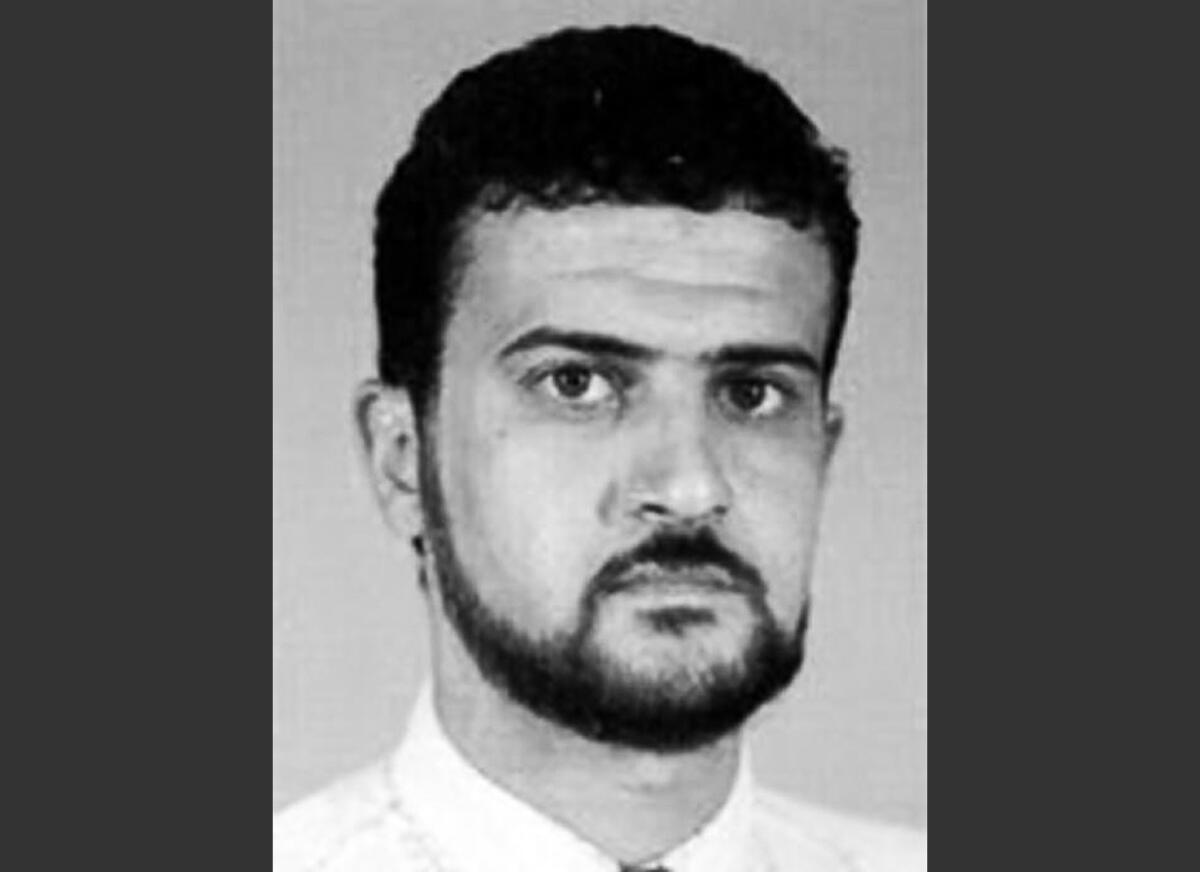Terrorist suspect on trial for U.S. Embassy bombings dies in custody

- Share via
Reporting from New York — A Libyan man who was expected to be tried in New York this year on charges that he helped Al Qaeda orchestrate the bombings of two U.S. embassies in Africa has died from “longstanding medical problems,” officials said in court documents filed Saturday.
Abu Anas al Liby, whose real name was Nazih Abuld-Hamed Ruquai, had been in custody in New York since October 2013. A brief letter from the U.S. attorney in Manhattan, Preet Bharara, to the judge presiding over Al Liby’s case said that he was taken from the Metropolitan Correctional Center to a New York hospital on Christmas Eve “due to sudden complications” arising from his health issues.
“We write now to inform the court that despite the care provided at the hospital, his condition deteriorated rapidly, and Al Liby passed away yesterday evening,” Bharara said.
The charges against Al Liby included conspiracy to kill U.S. citizens and conspiracy to destroy U.S. property. A 150-page indictment naming him and others accused in the bombings alleged that beginning in late 1993, Al Liby was involved in discussions with Al Qaeda members about attacking the embassies in Kenya and Tanzania in retaliation for U.S. military action in Somalia. The indictment said he “conducted visual and photographic surveillance” of the Nairobi embassy compound the same year.
Al Liby, whose age was given as 49 when he was arrested, pleaded not guilty to the charges.
On Saturday, his wife, who asked to be identified as Um Abdullah, told the Associated Press that the prison experience only worsened his ailments, including hepatitis C, leading to his death.
“I accuse the American government of kidnapping, mistreating and killing an innocent man. He did nothing,” she said.
Twelve Americans were among the 224 killed in the attacks. Of those suspected terrorists named in the original indictment, nine have died or been killed in Pakistan, Afghanistan or Somalia, including Al Qaeda leader Osama bin Laden. Six are serving life sentences in U.S. prisons. Several remain at large.
Al Liby’s appearance in a New York court in 2013 highlighted the Obama administration’s push to use civilian courts rather than the Guantanamo Bay military prison in Cuba and drone strikes to deal with high-profile terrorism suspects. He spent several days being questioned on a U.S. Navy ship in the Mediterranean following his Oct. 5 arrest in the Libyan capital, Tripoli.
“The allegation is that he met with Al Qaeda members about a possible bombing of the American Embassy in Nairobi, Kenya, that ended up taking place five years later in 1998. There is no allegation that he had any connection to Al Qaeda after 1994,” Patton said.
After his arrest, Al Liby’s family said he suffered from hepatitis C and had nothing to do with Al Qaeda since the mid-1990s.
But prossecutors described him as “a clear danger to the community.”
More to Read
Sign up for Essential California
The most important California stories and recommendations in your inbox every morning.
You may occasionally receive promotional content from the Los Angeles Times.














